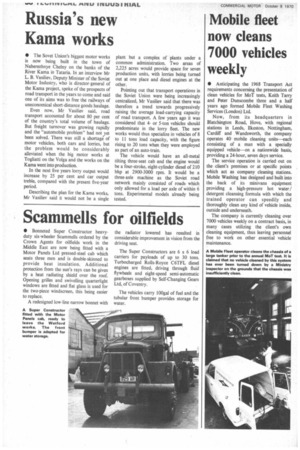Russia's new Kama works
Page 40

If you've noticed an error in this article please click here to report it so we can fix it.
• The Sovet Union's biggest motor works is now being built in the town of Naberezhnye Chelny on the banks of the River Kama in Tataria. In an interview Mr L. B. Vasiliev, Deputy Minister of the Soviet Motor Industry, who is director-general of the Kama project, spoke of the prospects of road transport in the years to come and said one of its aims was to free the railways of uneconomical short-distance goods haulage.
Even now, Mr Vasiliev said, road transport accounted for about 80 per cent of the country's total volume of haulage. But freight turnover was growing rapidly and the "automobile problem" had not yet been solved. There was still a shortage of motor vehicles, both cars and lorries, but the problem would be considerably alleviated when the big motor works at Togliatti on the Volga and the works on the Kama went into production.
In the next five years lorry output would increase by 25 per cent and car output treble, compared with the present five-year period.
Describing the plan for the Kama works. Mr Vasiliev said it would not be a single plant but a complex of 'plants under a common administration. Two areas of 2,225 acres would provide space for seven production units, with lorries being turned out at one place and diesel engines at the other.
Pointing out that transport operations in the Soviet Union were being increasingly centralized, Mr Vasiliev said that there was therefore a trend towards progressively raising the average load-carrying capacity of road transport. A few years ago it was considered that 4or 5-ton vehicles should predominate in the lorry fleet. The new works would thus specialize in vehicles of 8 to 11 tons load capacity, with the figure rising to 20 tons when they were employed as part of an auto-train.
The vehicle would have an all-metal tilting three-seat cab and the engine would be a four-stroke, eight-cylinder diesel of 210 bhp at 2900-3000 rpm. It would be a three-axle machine as the Soviet road network mainly consisted of roads, which only allowed for a load per axle of within 6 tons. Experimental models already being tested.








































































































